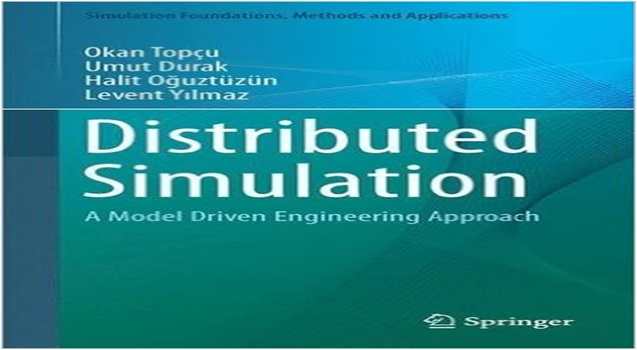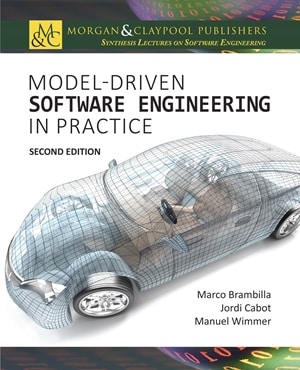In today’s guest post, Umut Durak talks about his book Distributed Simulation: A Model Driven Engineering Approach (Simulation Foundations, Methods and Applications) that just came out this January. Enter Umut.
In the 2002 Simulation Interoperability Workshop, Andreas Tolk started the discussion in his paper Avoiding another Green Elephant – A Proposal for the Next Generation HLA based on the Model Driven Architecture with claiming that the MDA will influence the future of simulation.
Since then, there have been various efforts on investigating, developing and employing model-driven methodologies for the engineering simulation systems. In 2011 Andrea D’Ambrogio started organizing the International Workshop on Model-Driven Approaches for Simulation Engineering (Mod4Sim). This year, we will be conducting it for the sixth time. Okan Topcu, Halit Oguztuzun, Levent Yilmaz and myself had been working on model-driven methodologies applied to simulation for almost a decade when we decided to prepare a book on distributed simulation and model-driven methodologies.
Our aim was to demonstrate the utility and effectiveness of model-driven approaches in developing distributed simulations. That is how we came up with our new title Distributed Simulation: A Model Driven Engineering Approach (Simulation Foundations, Methods and Applications) from Springer. The book starts by summarizing the foundations of model-driven engineering and de facto distributed simulation standard, High Level Architecture (HLA). Then, aligned with the IEEE 1730 -2010, Recommended Practice for Distributed Simulation Engineering and Execution Process (DSEEP), we tried to introduce the steps of distributed simulation engineering with promoting model-driven methodologies. Besides our intention to provide application hints for practitioners of simulation engineering, we also tried to address research directions for the simulation research community.
Readers can find a wide range of concepts, technologies and methodologies from the model-driven world applied to simulation, including metamodeling, model transformations, code generation, model-based testing, model refactoring, EMF, ECORE; ATL, QVT, KDM, MoDisco and many others. We believe that we are addressing the important synergy between simulation and model-driven worlds by providing our readers a unique and a comprehensive text. And of course, we hope that our readers will like it.
So, dear readers, if/when you read the book, let us know what you think!!
FNR Pearl Chair. Head of the Software Engineering RDI Unit at LIST. Affiliate Professor at University of Luxembourg. More about me.




Can anybody explain the idea of a “Green Elephant”?
From Tolk’s paper (the one linked): ‘The term “Green Elephant” was applied to Ada as a pun combining the traditional color of the armed forces (green) and the idiom “White Elephant” used for something that cannot be used for real practical issues but is a cost driving factor only’
Thanks a lot for the explanation. Ada, as the green elephant is referred in Tolk’s paper as the “antipattern” that could barely survive the wave of emerging technologies and tools. MDA is pronounced as the opportunity to push High Level Architecture (which is also green -military- technology) to evolve.
Thanks Firsj. Ada was originally known as the green language (or option) before being chosen by the DoD.
ADA had the only single problem at the 80’s, that it was not possible for anyone far from academy/defense to gain access to an ADA compiler.
– yes, we asked after a NASA presentation at UPV by ’86.
I took a quick peak at the book, it seems perfect for me. I’m a Computer Scientist doing my PhD in the field of Robotics. I already have experience with MDE (my teacher in university was Mehmet Aksit, perhaps the authors are familiar with him?), but simulation is something which I would like to add to my toolbox. I especially like the chapter about synergies with agent technology (sorry, I skipped ahead a little bit).
Thanks a lot Flrsj for the nice words about the book. Sure, I know Professor Aksit and I have been following his work for a long time. I also had the chance to meet him personally.